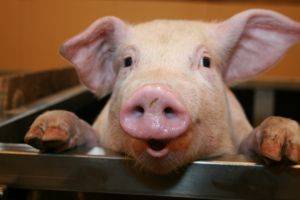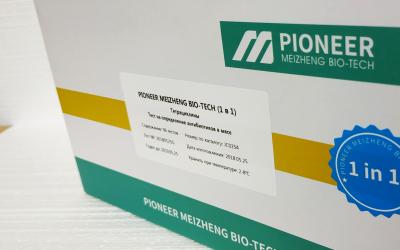New mathematical method could help monitor muscle iron levels in cattle
The research was supported by a grant from the Russian Science Foundation (RSF). The results are published in the peer-reviewed Global Journal of Environmental Science and Management.
Iron is an important and useful trace element that is necessary for all living organisms. it helps to synthesize collagen and serotonin, and helps to support the immune system. But the main function of iron is to allow blood cells to "breathe", that is, to receive oxygen and deliver it to the tissues, after which the cells remove the exhaust carbon dioxide from the body. The human body cannot produce iron on its own, but receives it from food. Therefore, it is necessary to include foods with iron in the diet - red MEAT, broccoli, spinach, tofu, dark chocolate. If iron deficiency occurs, this leads to a decrease in immunity and increases the risk of contracting various infections.
The daily norm of iron for a person depends on gender and age, but on average this figure is about 12-15 mg. Of the meat products, red meat is the richest in iron - mainly beef, the iron content of which is 3-4 mg per 100 g. 2-3 times. The level of iron in muscle tissue affects the quality of beef and, with the right approach, provides up to 18% of the daily requirement of the trace element.
Scientists from the Novosibirsk State Agrarian University have developed a new mathematical method to analyze the level of iron in the muscle tissue of cattle. The model allows not only to make a qualitative assessment, but also to track the dynamics of iron concentration in animals throughout their lives. According to scientists, this will make it possible to carry out intravital diagnostics of herds and identify the level of load of heavy metals in the animal body. If violations are found, then action can be taken. As a result, it will be possible to obtain a high-quality and safe product that corresponds to the global trend towards environmental friendliness.
Scientists took 100-gram samples of the diaphragmatic muscle (separates the chest and abdominal cavity) of Hereford cows, and also did a blood test of the animals. The Hereford is the most common meat breed on the planet. Using regression analysis, the researchers compared the level of iron in muscle tissue and blood and found that these values have a fairly high correlation with each other, that is, knowing the values of one, you can calculate the other. Based on the data obtained, the authors developed a mathematical model for predicting the level of iron in the blood of animals with an accuracy of 70%. Whether the level of a microelement is normal is determined by the concentration of globulins (spherical proteins, including those involved in the transport of iron), red blood cells, and also the color index of the blood.
“Today, iron levels in meat can only be determined after slaughtering the animal and analyzing the samples using atomic absorption spectrometry, which is an expensive and complex analysis that is not carried out in every laboratory. We have developed a method based on an efficient model for predicting the level of iron in muscle tissue. It is relatively easy to use and has the added benefit of tracking iron levels throughout the life of the animal. To be introduced into production, it must be tested and, ideally, scaled up, that is, an experiment should be conducted on a large population of animals. These steps will improve the model and improve the accuracy of the forecast. Our model will allow us to overcome the shortcomings of the currently used approaches,” said Kirill Narozhnykh, the HEAD of the project supported by the Russian Science Foundation.



























































